Isolated and timeless, the tiny Yemeni archipelago of Socotra remains one of the world’s most unique destinations.
Set amidst turquoise seas at the entrance of the Gulf of Aden, Socotra has been called the “Galapagos of the Indian Ocean”. The archipelago is home to remarkable terrestrial and marine biodiversity – with over 30 percent of its plant species and much of its fauna being found nowhere else in the world.
Most recognisable is the dragon’s blood tree [Dracaena cinnabari], the squat branches and dense foliage of which are dotted across the Socotran landscape. Whether for its remote location, the resin tapped from the dragon’s blood tree (prized as pigment and medicine), its frankincense, or its native aloes – Socotra has for thousands of years held a mystery and allure.
But, despite its inaccessibility and low population size of about 60,000, Socotra has not escaped environmental degradation. The last 30 years have seen a rise in unregulated tourism and development that threaten the island’s delicate natural balance.
In 2008, UNESCO recognized 75 per cent of Socotra’s land as a World Heritage Site. Still, unplanned urbanisation, resource exploitation, invasive species and climate change have all taken a toll.
Ongoing conflict in Yemen is adding to the pressures, with Socotra becoming more and more economically isolated from the mainland. The high cost and low availability of cooking gas in Socotra, for example, is leading to a spike in deforestation and desertification. Over-grazing affects the land’s ability to regenerate; compounding the problems that local communities are facing.
Locally-led solutions

A project supported by the United Nations Environment Programme (UNEP) and the Global Environment Facility (GEF) is empowering local communities to take action to protect their home.
Two community-run nurseries have been established that have already planted 2,000 seedlings of the dragon’s blood tree, with the ultimate goal of restoring degraded forests of around 80,000 trees. This is a win for both the ecosystem and residents of Socotra, who can find employment in the nurseries and benefit from the improved water distribution that reforestation brings.
UNEP and GEF are also working with local farmers to develop land management plans, and providing technical support to switch to more sustainable grazing methods, which will keep livestock healthy, while giving the land a chance to heal.
On the rugged coastline of the island’s north-west, Socotra’s residents are also spearheading monitoring and conservation efforts to protect the loggerhead sea turtle [Caretta caretta] – a vulnerable local species. Turtle nests have dropped significantly year after year, as human and natural threats to the species increase. Local communities, supported by the project team and local authorities, have formed a task force to protect the turtles, with 70% of the nests successfully delivering baby turtles this year.
“UNEP and the Global Environment Facility’s project in Yemen proves without a doubt that protecting biodiversity, especially during conflict, requires the involvement, engagement, and buy-in of local communities. Conservation simply cannot work without communities, who must feel the benefits of protecting the natural resources in their care,” said Doreen Robinson, UNEP’s Head of Biodiversity and Land.
Emerging threats
Going forward, tackling invasive alien species (non-native species that have been introduced into the local environment and are damaging local biodiversity) remains a top priority. Customs agents at the border have been trained through the project to detect and quarantine threats arriving onto the island. Local communities have also received training on techniques to remove existing alien species, like the Palm weevil, a pest originally from tropical Asia that has, within a matter of years, become ubiquitous in Socotra. The weevil has an insatiable appetite for the island’s native palm trees, wreaking havoc upon the web of biodiversity they support.
The project also supports management of Socotra’s protected areas by facilitating collection of biodiversity data and publishing it on a freely accessible portal. The portal provides policy makers with science to guide decisions such as zoning planning.
“The portal is providing improved access to environmental information on the Socotra Archipelago. Data and information are now available 24/7 for free as part of the Yemeni Government’s commitment to increasing the availability of information,” said Tawfeeq Al-Sharjabi, Yemen’s Minister of Water and Environment.
“As an executing agency, the Royal Society for the Conservation of Nature is proud of this partnership with the Environmental Protection Agency and local authorities. We are seeing first-hand how the engagement of indigenous people and youth is providing compelling results,” said Nashat A. Hamidan, Project Manager for the Royal Society for the Conservation of Nature.
A global problem
Despite being challenged by conflict, physical and economic isolation, an arid climate, and fragile ecosystem, the successes of Socotra is proof that biodiversity conservation can work.
With one million species are at risk of extinction, biodiversity is a key priority for UNEP. As the world prepares to for a new post-2020 biodiversity framework, the issue is more urgent than ever. In fact, biodiversity loss and ecosystem collapse are ranked among the top five threats to humanity in the coming decade.
Each year, the 22 of May is marked as the International Day for Biological Diversity. For more information about the Support to the Integrated Program for the Conservation and Sustainable Development of the Socotra Archipelago or UNEP’s wider work in landscape restoration and biodiversity conservation, please contact Johan.Robinson@un.org. Learn more about our GEF-supported work in Biodiversity here.






